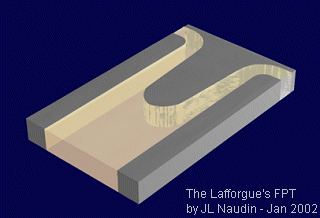

The
Lafforgue's Field Propulsion Thruster
By
Jean-Louis Naudin
created on January
20, 2002 - JLN Labs - Last
update February 6, 2002
All
informations in this page are published free and are intended for
private/educational purposes and not for commercial applications
|
|||||||||||
Some documents references :
 FR Patent N°2651388 "Isolated systems self-propelled by
electrostatic forces"
by Lafforgue Jean-Claude - March 1, 1991
FR Patent N°2651388 "Isolated systems self-propelled by
electrostatic forces"
by Lafforgue Jean-Claude - March 1, 1991Return to the JLN Labs home page